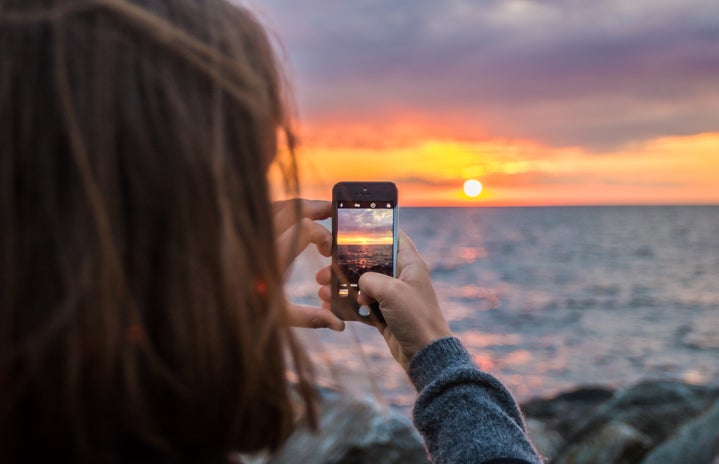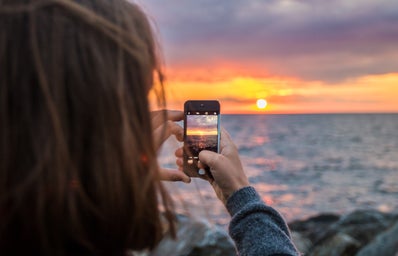Trends. We are a society of trends. We are bombarded daily with images that set unrealistic beauty standards for both men and women. Advertisements are coyly placed and disguised as celebrity social media posts in order to create the perception that the use of certain celebrity endorsed products will make us more equal with the beautiful people that fill our television screens. Do we blame the companies for tricking us into thinking we can be just like the celebrities? Or do we blame ourselves for being tricked so easily? How about neither. Let’s instead look at where the problem begins: social media.
It was up to the recent generations to be the innovators of a technology friendly world. And we have sadly become more than friends with technology. We have become completely reliant on it. We see examples of this in our homes, where we control our lights with simple voice commands. We see it in the workplace where Skype is used during regular business meetings to communicate with colleagues from all over the world. But where do we see technology the most? In our hands. Our cell phones have gone from being a tool for communication to weapons that we use daily, the ammunition being social media. Cyber bullying has become one of the biggest issues today’s youth faces, social media being the main platform for it. It is true that younger social media users are more affected by cyberbullying, however that isn’t the only problem we see arise from social media.
Social media platforms have created unrealistic ideas about beauty that have severely altered the self-esteem of men and women all over the world. We determine our self-worth by the number of likes we get on our pictures and posts. We have become so infatuated with self-image in fact, that we have created a new word that has now been published in actual dictionaries, that simply describes a flattering picture someone takes of themselves with the pure intention of posting it on social media. The term “selfie” was generated within the last ten or so years, and studies have shown that people who generally take many selfies often have severe personal issues that relate solely to self-image and worth.
Social media is a great way to keep in contact with people all over the world. Twitter and Facebook are among some of the most popular social media sites that allow people to stay connected by posting and sharing statuses and pictures. The only problem is that social media isn’t used as a way to stay connected. Facebook statuses have become a way to express a need for attention. And Twitter has become an online burn book that is used to indirectly bash people without the fear of ever facing them in real life. Snapchat, a way of sharing pictures as messages has been used countless times as blackmail with the advancement of screenshots. However, what is worse than all of this is that social media has been used as a way to tell women what they should look like in order to be liked. ‘Instagram famous’ refers to people on Instagram who receive various amounts of likes on their Instagram pictures from people all over the world. Being ‘Instagram famous’ has now become so important to some people that they are now buying likes from Instagram itself to appear more popular to the public.
Getting attention on your social media posts may not be a bad thing, but it’s the intentions behind the post that identify the problems that social media causes. People aren’t posting to share their lives with people anymore. People are posting unrealistic or altered images to create a reality that doesn’t exist in order to generate attention or popularity. The dire need to fit in heavily impacts millennials. It’s obvious when we look at today’s beauty trends. Every girl seems to be wearing the same clothes as Kylie Jenner. The desire to keep up with today’s beauty trends has led to girls physically altering their appearance at young ages just to look like everyone else. It is no longer uncommon for teenage girls to spend thousands of dollars every month on lip injections and popular makeup.
Social media creates the idea of a reality that doesn’t exist. Because everything is so shareable we see intimate parts of people’s lives that we wouldn’t normally see. So when we see how a richer celebrity is living and doing daily life we begin to think of that as the norm, thus creating a self-created problem within our minds because we aren’t living that life. It’s easy to distort reality through social media posts. We can pose our bodies, add filters, and if that still isn’t enough, we can utilize photo shop to add fake backgrounds, change our looks, or even change the picture completely. The problem has become so real that many popular social media users have come forward to show what un-photo shopped pictures of them look like in order to remind people that social media isn’t reality. The impacts that unrealistic beauty standards have are unmeasurable. The psychological affects social media places on people can last years.
Again, not all aspects of social media are bad. It is time though to start embracing life for the beautiful mess it is. The saddest truth is that we can’t recognize reality within social media posts because they have become so manipulative. We have forgotten the entire purpose of social media which was to stay connected, and have now become so disconnected that we have used social media as a barrier between real life and imagination.

